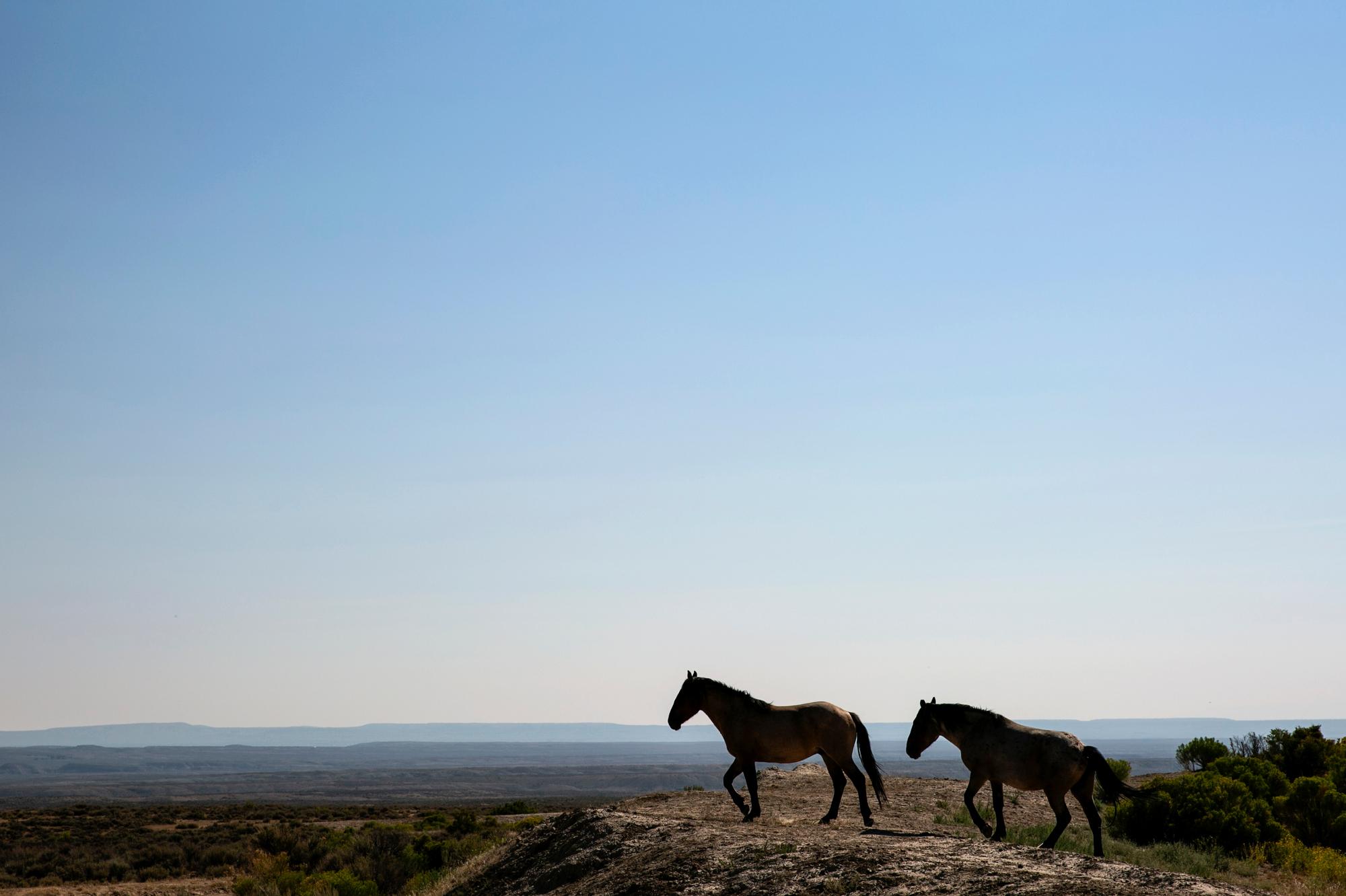
The Bureau of Land Management is rounding up more than 700 horses living on public land in northwest Colorado, a sharp reduction of a herd that officials say is too large and roaming in dangerously dry conditions.
Over the last week, contractors have used helicopters to corral mustangs living in the Sand Wash Basin, which includes 155,000 acres of public land managed by the federal agency in the northwest corner of the state.
As of Tuesday, crews had gathered more than 400 horses, said Chris Maestas, a spokesperson for the BLM’s Northwest Colorado district.
The operation has continued against the wishes of mustang enthusiasts, conservation groups and major political figures, including Gov. Jared Polis and Democratic U.S. Rep. Joe Neguse, both of whom had asked the federal agency to delay the roundup.
The federal land agency has declared the roundup an emergency need due to exceptional drought conditions in the horses’ habitat. A group had to haul water in for the horses earlier this year, Maestas said. Recent monsoon rains have filled up ponds and helped grasses grow, but he said it was “not nearly enough.”
“We’ve had an overpopulation here for many, many years, and the forage itself has just been decimated. It’s like, nonexistent,” Maestas said.
The contractor, Cattoor Livestock Roundup Company, is using two helicopters to drive the horses to a trapping site, he said. The horses are then taken by trucks to a facility in Cañon City, where they will be held until they are put up for adoption at the beginning of next year.
The Sand Wash Basin herd has grown to 896 horses. A manageable herd size for that region is anywhere between 163 and 362 horses, according to BLM officials, who plan to reduce it by about 80 percent to reach the lower end of that range. The agency plans to give contraception to 25 mares and release them and 25 stallions back to the wild.
Activists and people concerned with the herd's genetic diversity are pushing the agency to leave the final horse population at the higher end of that range. They have also criticized the helicopter trapping method, saying it stresses the horses and leads them to injury.
The American Wild Horse Campaign, a national nonprofit, is asking the BLM to ground the helicopters and review the contract with Cattoor Livestock Roundup. The Western Watershed Project and the Colorado chapter of the Sierra Club are also calling for the agency to delay the roundup and instead focus on removing livestock from the area.
Maestas said the helicopter method “has been proven to be humane and safe,” though he did not immediately offer evidence. One horse with an existing leg injury that was not related to the roundup was euthanized, according to the BLM.
Dozens watched the roundup from a distance over the weekend, including activists and nature photographers. Andi Poland, a nature photographer based in Highlands Ranch, said she went to see the horses earlier this summer but was too emotional to witness the roundup.
She said drought worsened by climate change has degraded conditions in areas the horses occupy but was distressed that the federal government was removing “a legacy of the West.”
“It’s a very, very difficult place for these horses to live. There’s no question about it,” she said. “But they’re survivors. And if you look at the horses, they look very healthy.”
Editors note: This story has been updated to correct the type of horses that will be released to the wild. The BLM is releasing 25 stallions to the wild, not 25 foals.
- To Reintroduce Colorado’s State Fish, Wildlife Officials Must Remove Their Non-Native Predators — Other Trout
- Wildlife From Roadside Zoos And Circuses, And Some From Netflix’s ‘Tiger King,’ Are At A Rescue In Colorado
- Have You Noticed Fewer Bees In Colorado This Year? You’re Not Alone
- Biologists Mis-Sexed A Colorado Wolf. Now It May Have Given Birth To The State’s First Wolf Pups Since The 1940s








